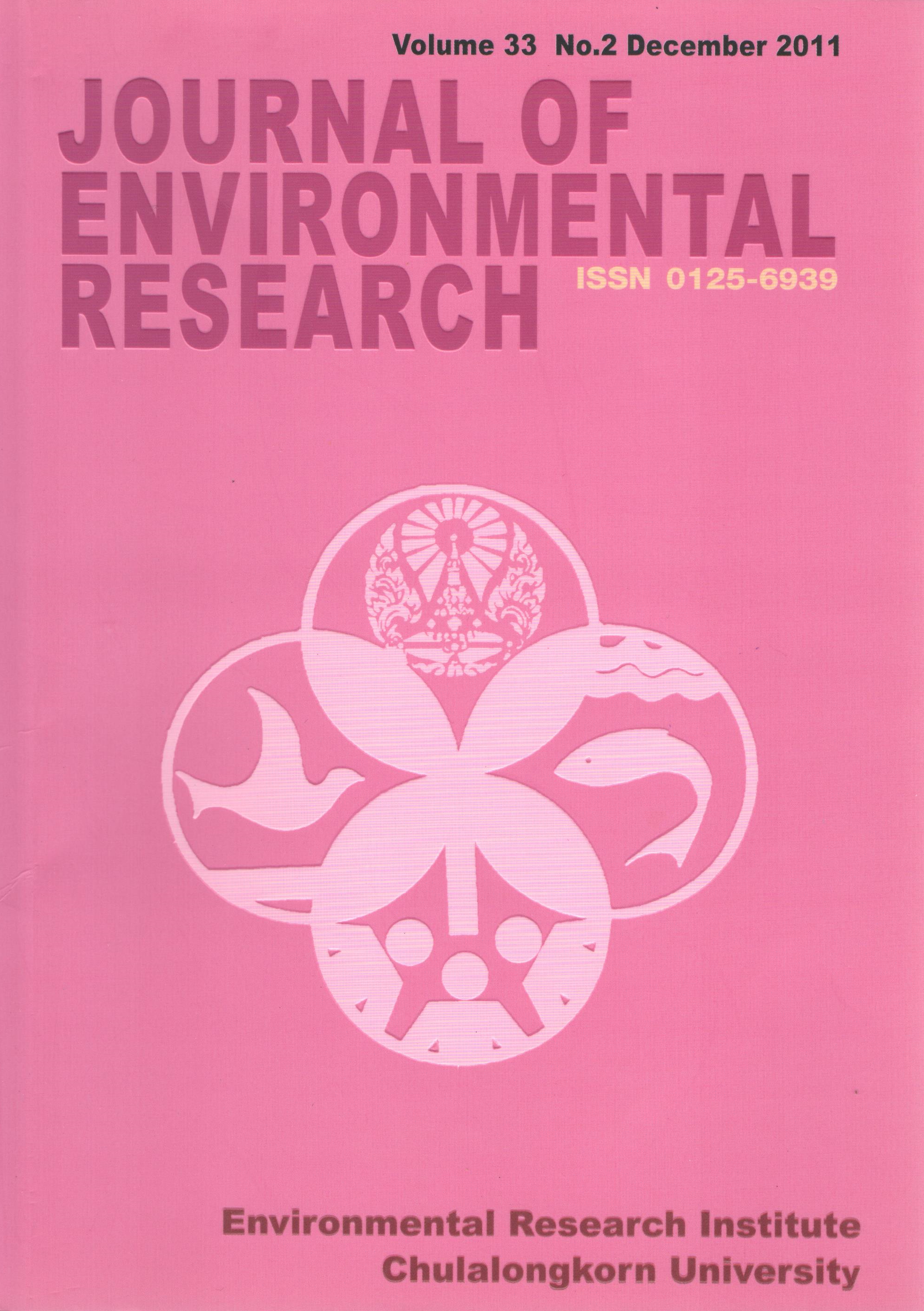Factors Affecting Swine Farmer’s Decision on Selecting Waste Treatment Systems
Main Article Content
Abstract
The objective of the study were to obtain 1) socioeconomic background of the swine farmers and their current waste treatment system used on farm; 2) the suitable and technically possible waste treatment system for the study site; and 3) factors affecting farmers’ decision on selecting waste treatment system. The sample were drawn from 78 swine farmers in Sam Khwai Phueak Sub-district, Mueang District, Nakhon Pathom Province. The analytical tools of the study comprised descriptive statistics and a multinomial logit model for analyzing the factors affecting farmers’ decision on selecting waste treatment system. The suitable and technically possible waste treatment systems, that the farmers were willing to try on, were stabilization pond, cover lagoon, and anaerobic filter, respectively. As such, the key factors affecting farmers’ decision in selecting the waste treatment systems were technical and financial supports from the related agencies, information dissemination frequency, and non-farm income, respectively. To promote the farmers in installing the technically appropriate waste treatment system on their farm, the related agencies such as Department of Livestock Development, Department of Agricultural Extension, Pollution Control Department, and local administrative organizations should focus on the following issues: 1) continuously and constantly clarify and provide apparent information on efficiency of different waste treatment systems to the farmers; 2) financial support should be provided partially associated with the farmers’ own investment on waste treatment installation; and 3) promote opportunities in searching ways of increasing farmers’ non-farm income.
Article Details

This work is licensed under a Creative Commons Attribution-NonCommercial 4.0 International License.
Published articles are under the copyright of the Applied Environmental Research effective when the article is accepted for publication thus granting Applied Environmental Research all rights for the work so that both parties may be protected from the consequences of unauthorized use. Partially or totally publication of an article elsewhere is possible only after the consent from the editors.

